|
Messerschmitt Bf 110 G-2

Eduard, 1/72 scale
S
u m m a r y |
| Catalogue Number: |
Eduard Kit No. 7085 - Messerschmitt Bf 110 G-2 ProfiPACK |
| Scale: |
1/72 |
| Contents and Media: |
195 parts in grey coloured plastic; 13 parts in clear; colour photo-etched fret; self-adhesive die-cut masking sheet; markings for four aircraft |
| Price: |
USD$33.96 plus shipping,
available online from Eduard |
| Review Type: |
FirstLook |
| Advantages: |
Outstanding detail; thoughtfully engineered for easy construction; fine surface
features including crisply recessed panels and subtle rivet lines where
appropriate; includes colour photo-etched parts; separate parts for closed/open pilot's and gunner's canopies; many options including drop tanks, centreline gun packs and rockets; high quality
plastic; narrow sprue attachments; includes three styles of nose; easy conversion to a Bf 110 F (shave off nacelle intakes, use early-style canopy and relocate pitot). |
| Disadvantages: |
|
| Conclusion: |
In common with Eduard's 1/72 scale Bf 110 C, D and E kits, this new 1/72 scale Messerschmitt Bf 110 G-2 is beautifully detailed with class leading surface detail. Set aside any concerns about complexity. This should be a viceless build. I really like the grey plastic too! |
Reviewed by Brett Green

Eduard's 1/72 scale Bf 110 G-2 is available online from Squadron.com
The Luftwaffe's heavy fighter arm, the Zerstorer Gruppen, was a prestigious force in the pre-WWII and Blitzkreig era. The theory of a large, twin-engine, long range, heavily armed and self-sufficient fighter was popular at the time, and worked well in practice over Poland, the Low Countries and France.
However, the Zerstorer's fortunes turned over the skies of Britain. Along with the much maligned Stuka, the Bf 110 earned a miserable reputation during the Battle of Britain thanks to the lop sided contest with faster and more manoeuverable Spitfires and Hurricanes.
Nevertheless, the useful life of the Messerschmitt Bf 110 was far from over. The Bf 110 remained a stable and reliable weapons platform for another five years. It continued in the heavy fighter and fighter-bomber role in the Meditteranean and on the Eastern Front, fitted with bombs, gun packs and additional fuel tanks.
The Messerschmitt Me 210 was developed to replace the Bf 110, but the new aircraft's flying characteristics were more dangerous to its pilots than enemy fighters. The Bf 110 was therefore treated to a major upgrade. In 1942, the Messerschmitt Bf 110 F was fitted with newly designed streamlined engine cowlings housing DB601F engines, the powerplant intended for the Me 210. These each produced 1350 hp - almost double the power of the original Jumo engines fitted to the Bf 110 B. The large spinners were the same as the Me 210 and the Bf 109 F and G series, with a cap covering the centre hole.
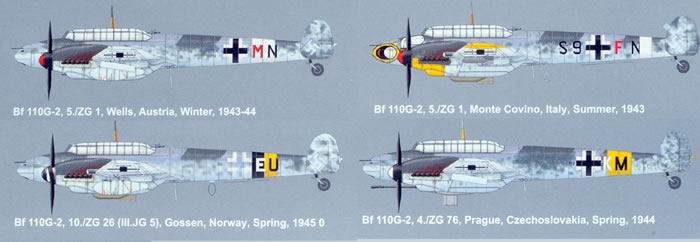
The Messerschmitt Bf 110 G was introduced soon after with the new DB 605 engine. This version retained the streamlined engine nacelle with some added scoops and revised inspection windows. A new style of rear canopy was introduced with a side-opening hatch replacing the gunner's sliding clamshell. The defensive armament was also upgraded to a twin 7.92mm MG 81Z machine gun. This variant was equipped with many field conversions, including 300 litre drop tanks, twin 20mm gun trays, a 37mm gun pack, air-to-air rockets and, of course, bombs beneath the wings and fuselage. In the desperate days of 1943 and 1944, the Bf 110 G was even thrown into daylight battle with American bombers, with predictably disastrous results.
Later in its development the upper nose armament was changed from 4 x 20mm cannon to two powerful 30mm MK 108 cannon.
Arguably the most important contribution made to the German war effort by the Messerschmitt Bf 110 was as a night fighter. The role was initially ad-hoc. From July, 1940, day fighters were simply painted black and sent aloft to deal with British bombers, now making their attacks under the relative protection of darkness. These early night fighters had no additional equipment nor ground control assistance. Enemy aircraft were held in the cone of a searchlight, and the Bf 110 would engage the bomber while it was illuminated in the beam.
The ultimate development of this long-serving marque was the Bf 110 G-4 night fighter. Sprouting ungainly radar "antlers" from its nose, with chunky flame dampers on the side of the engine nacelles and loaded with radar equipment, the tail surfaces were increased in area and fitted with larger Flettner tabs to compensate for its increased weight. "Schrage Musik" obliquely firing cannon were frequently fitted inside the cockpit too. These radar-equipped Bf 110 G-4s represented an effective and constant threat to Bomber Command from 1943 until the last days of the Second World War.
The Messerschmitt Bf 110 G in 1/72 scale
We have only seen a handful of 1/72 scale Messerschmitt Bf 110 G releases over the decades.
Frog's attempt dates back to the 1960s. The box art was very nice, but otherwise the kit was a typical product of its era - simplified and inaccurate in key areas.
Italeri released their 1/72 scale Bf 110 G several decades later. This was a disappointing kit suffering from very poorly depicted shapes, incuding bulbous nacelles, short blunt spinners, undersized flame damper exhausts, incorrect canopy, inaccurate propeller blade profiles and more.
High Planes Models from Australia offers a limited run, low-pressure injection moulded Bf 110 G-4 kit in 1/72 scale. This 1990s kit was supplemented with white metal detail parts and a vacform canopy. The good news is that this is an accurate model. However, substantial work is required to clean up the parts prior to assembly; and scratchbuilding skills are necessary to fill in the blanks, including much of the cockpit interior and the wheel well detail.
So it would seem that the late-war Messerschmitt Bf 110 fan has been poorly served in this scale.
Until now.
Eduard released the first of their 1/48 scale Messerschmitt Bf 110 family back in September 2007. The kits are very well detailed and feature class-leading surface detail; with plenty of useful options and attractive decals. They also have a reputation of being tricky to build.
Eduard clearly took a good hard look at the engineering and parts breakdown of those 1/48 scale kits and made some changes when they were designing their 1/72 scale Messerschmitt Bf 110 family. Having already built Eduard's 1/72 scale Messerschmitt Bf 110 E, I can report that construction was a very enjoyable experience. You can forget any preconceptions you might have about the 1/48 scale kits - this one was viceless - and I fully expect that the new Bf 110 G will be equally trouble-free.
This time around Eduard has moulded the main kit parts in a medium grey plastic. I know that the colour should not really make a difference, but I always think that this shade of grey somehow looks classier. The excellent surface detail seems to be displayed to its best advantage under this colour too.
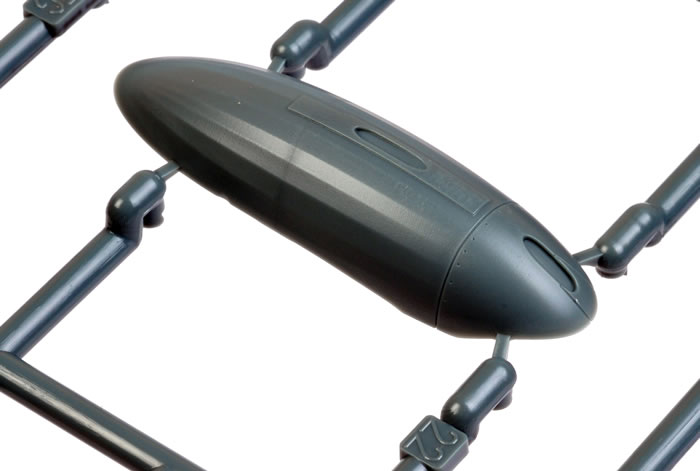
Eduard's 1/72 scale Bf 110 G-2 shares a number of sprues with its predecessors, including the fuselage halves, wings and tailplanes; but two completely new sprues are also included.
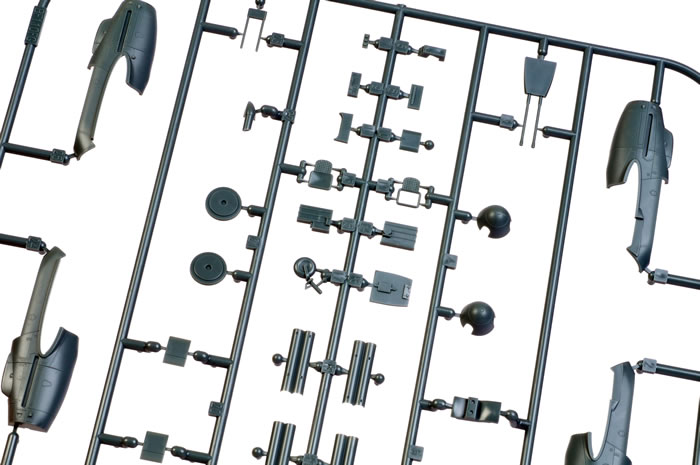
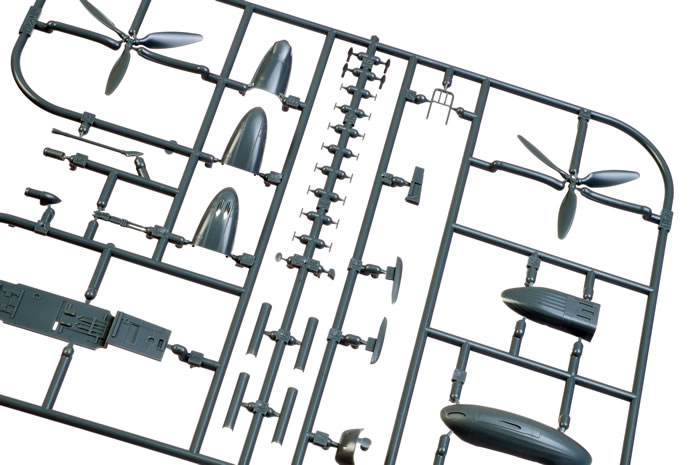
The new sprues contain a new cockpit floor and other interior details, an MG 81Z Zwilling rear machine gun, the 30mm gun nose with optional blank or cannon lower noses, new wing tips, revised engine nacelles, propeller blades and spinners, twin 20mm gun trays, a 37mm gun pack, single and twin air-to-air rockets and a larger tail wheel unit. Tropical filters are included on the sprues too.
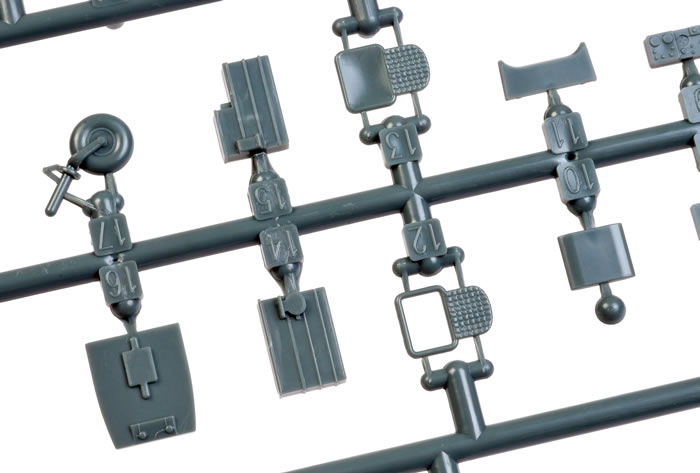
Many of the 195 grey plastic parts are marked "not for use" and will find their way to your spares box.
Moulding quality is superb. I could not find a single sink mark or ejector pin in any area that will be visible on the finished model.
Crisply recessed panel lines are partnered with beautifully subtle rows of rivets.
I like the treatment of the fabric control surfaces too, with delicately raised rib tape and no sagging in between.
The fuselage is broken down into the main halves with a separate nose (upper and lower) plus an insert for the deck immediately aft of the cockpit.
The cockpit is comprehensively fitted out with a combination of fine plastic and colour photo etched parts.
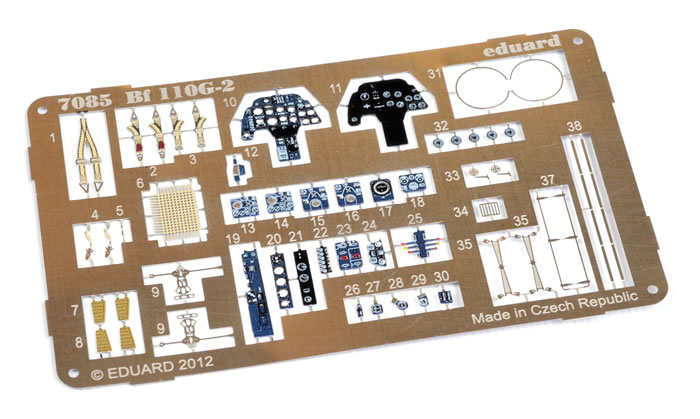
Ailerons are provided as separate parts.
Wheel well detail is moulded to the bottom of the wing and the inside of the nacelle parts. If you want to add more detail, Eduard has released a photo-etched fret that supplies the individual ribs inside the wheels wells. The main undercarriage legs are quite stout, with two locating pins to ensure correct positioning. Optional plastic and photo-etched oelo scissors are offered.
The shape of the new nacelles and spinners look good.
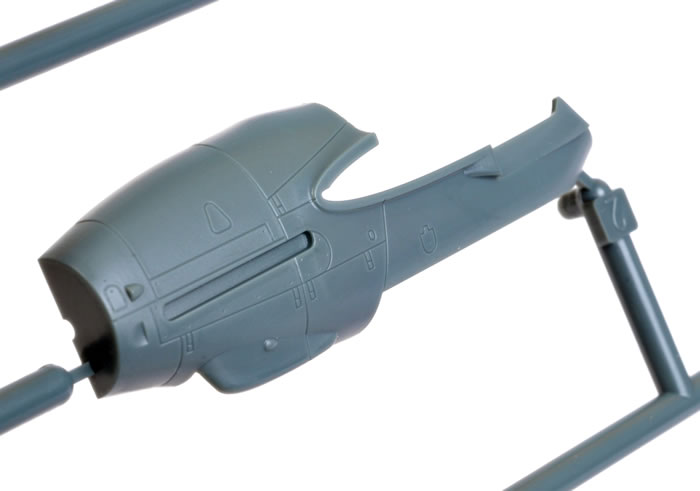
The exhausts are moulded as six-stack units, making assembly quite simple.
Clear parts are thin and well moulded. The pilot's and the gunner/radio operator's canopy hatches are both separate and may be posed open. The rear canopy section offers the option of holes for the upward firing Schrage Musik cannon.
It is interesting to note that the Bf 110 C/D/E style canopies are still on the clear sprue.
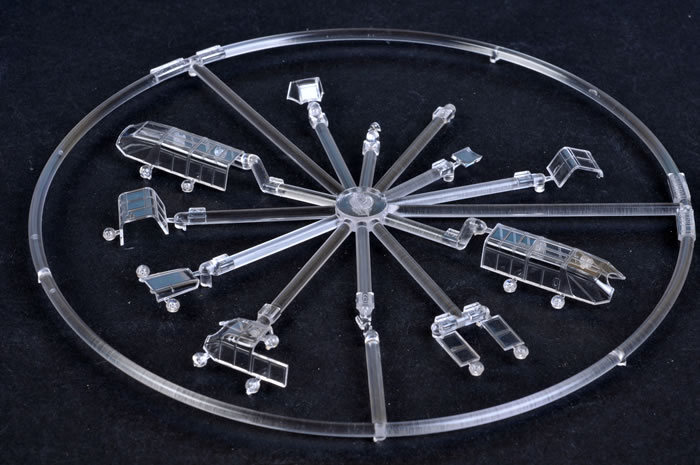
Eduard masks are included to ease the pain of painting that maze of canopy frames.
Decals for four marking options are included. All are finished in mid-war RLM 774, 75, 76 greys. The specific subjects are as follows:
-
5./ZG 1, Wells, Austria - Winter, 1943-44
-
5./ZG 1, Monte Covino, Italy - Summer, 1943
-
10./ZG 26 (III.JG 5), Gossen, Norway - Spring, 1945
-
4./ZG 76, Prague, Czechoslovakia - Spring, 1944

The decals are well-printed and in register. Stencil markings are included.
I was pleased to see this 1/72 scale kit once again packed in a box with a separate lid. These are much sturdier and give better access to parts than a side-opening box. The box art is particularly striking too!
Bf 110 F Conversion
The combination of parts supplied in the box means that it will be a simple matter to convert this model to a Bf 110 F or F/Trop.
Just shave off the small scoops on the fronts of the nacelles, fit the underwing pitot tube supplied on Sprue A, and use the early-style canopy for the Bf 110 F.
You might also want to fill in the recessed outline of the triangular inspection ports on the sides of the nacelles and replace them with three individual instrument decals for each side.
Until now, there has been no worthwhile mainstream Messerschmitt Bf 110 G kit in 1/72 scale. Eduard has dramatically changed that situation with their new Bf 110 G-2.
In my opinion, Eduard's Messerschmitt Bf 110s are some of the best mainstream 1/72 scale kits ever produced, alongside Tamiya's A6M Zeros and P-47D Thunderbolts. Their new 1/72 scale Bf 110 G-2 continues this tradition.
Surface detail is second to none, detail is excellent, and the colour photo-etched parts are the icing on the cake. There are some small parts in the cockpit, but the vast majority of modellers will be able to deal with these. The traditionally challenging areas such as the nacelles, the gun nose, the undercarriage legs and the wheel wells, have been engineered for ease of assembly. If the earlier releases are anything to go by, fit should be flawless.
With its interesting selection of ordnance, Eduard's 1/72 scale Messerschmitt Bf 110 G-2 will attract plenty of attention on the competition tables or on your model shelf.
Highly Recommended.
Thanks to Eduard for the sample
Review Text Copyright © 2013 by
Brett Green
Page Created 3 January, 2013
Last updated
5 January, 2013
Back to HyperScale Main Page
Back to Reviews Page |
